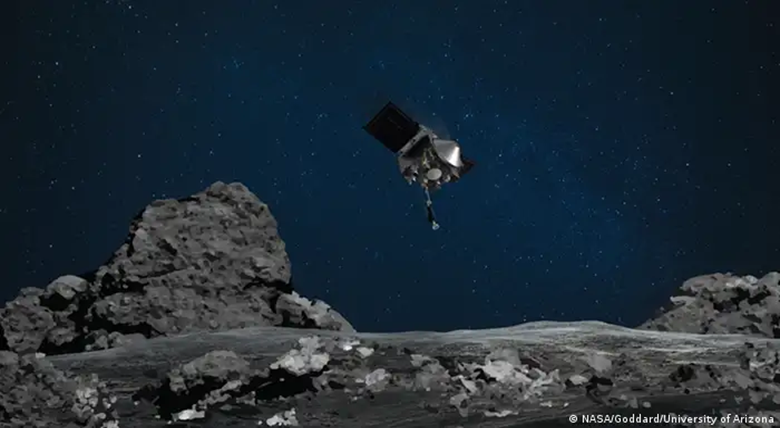It holds one of the secrets of the universe...the landing of the Osiris-Rex capsule

NASA announced the landing of a capsule sent by the OSIRIS-REx spacecraft carrying a sample of the asteroid Bennu and set off on a return journey to Earth in 2020. The sample will help determine the types of asteroids that threaten our blue planet.
A capsule containing the largest sample ever collected from an asteroid, and the first within a NASA mission, landed from space via the OSIRIS-REx spacecraft on Sunday (September 24, 2023), a few hours before its expected landing in the desert of the American state of Utah.
The sample contains about 250 grams of material (with a margin of error of 100 grams more or less), according to NASA estimates, and it will “help us better understand the types of asteroids that could threaten Earth,” and shed light on “the very beginning of the history of our solar system.” According to NASA Director Bill Nelson.
Two successive parachutes were supposed to stop the landing, which the army followed via sensors. However, the main parachute opened at a higher altitude than expected and the capsule landed slightly earlier than scheduled, a NASA commentator said during the live broadcast.
In this context, NASA scientist Amy Simon told Agence France-Presse, “The return of this sample is truly historic,” adding, “This will be the largest sample we return of lunar rocks” within the Apollo program, which ended in 1972. But before reaching the precious cargo, the maneuver that had to be performed was “dangerous,” Simon said before the capsule landed.

About four hours before the expected landing, the OSIRIS-REx probe launched the capsule containing the sample more than 100,000 kilometers from Earth (about a third of the distance between the Moon and Earth).
During the last 13 minutes, the capsule crossed the atmosphere, entering at a speed of more than 44,000 kilometers per hour, with a temperature of 2,700 degrees Celsius. The fall, which was monitored by military sensors, was slowed by two successive parachutes It was necessary to deploy them correctly to avoid a “hard landing.” The target area for landing extends 58 kilometers in length and 14 in width. The probe has been placed on the path to launch towards another asteroid.
Once the capsule lands on Earth, a team equipped with gloves and masks will examine its condition, before placing it in a net, then lifting it with a raft and transporting it to a temporary “clean room.” The capsule should be exposed to the sand of the American desert for the shortest possible period, in order to avoid any contamination of the sample that could distort subsequent analyses.

Samples from asteroid Bennu may hold key to understanding celestial bodies
The sample is scheduled to be transferred on Monday to the Johnson Space Center in Houston, Texas, where the box will be opened in another sealed room, in a process that will take days.
NASA plans to hold a press conference on October 11 to reveal the initial results. The majority of the sample will be preserved for study by future generations. About 25 percent of it will be used immediately for experiments, and a small portion will be shared with Japan and Canada, which are partners in the project.
Japan itself provided NASA with some grains from the asteroid Ryugu, which brought back 5.4 grams in 2020, during the Hayabusa-2 mission. In 2010, Japan collected a microscopic amount from another asteroid.

This time Bennu's sample is "much larger, so we'll be able to do more analyses," Amy Simon said. Asteroids are interesting because they are composed of the original materials of the solar system 4.5 billion years ago. While these materials changed on Earth, the asteroids remained intact.
The mission's chief scientist at the University of Arizona, Dante Lauretta, said that the Bennu asteroid is rich in carbon, and the sample that was brought "may represent the seeds of life that these asteroids carried at the beginning of our planet, which gave rise to this amazing biosphere."
Bennu, which has a diameter of 500 meters, orbits the Sun and approaches Earth every six years.
There is a small risk (one in 2,700) that it will collide with Earth in the year 2182, which could have a catastrophic impact. Providing more data about its composition may be useful. Last year, NASA was able to deviate an asteroid from its path by colliding with it.
Source: websites

